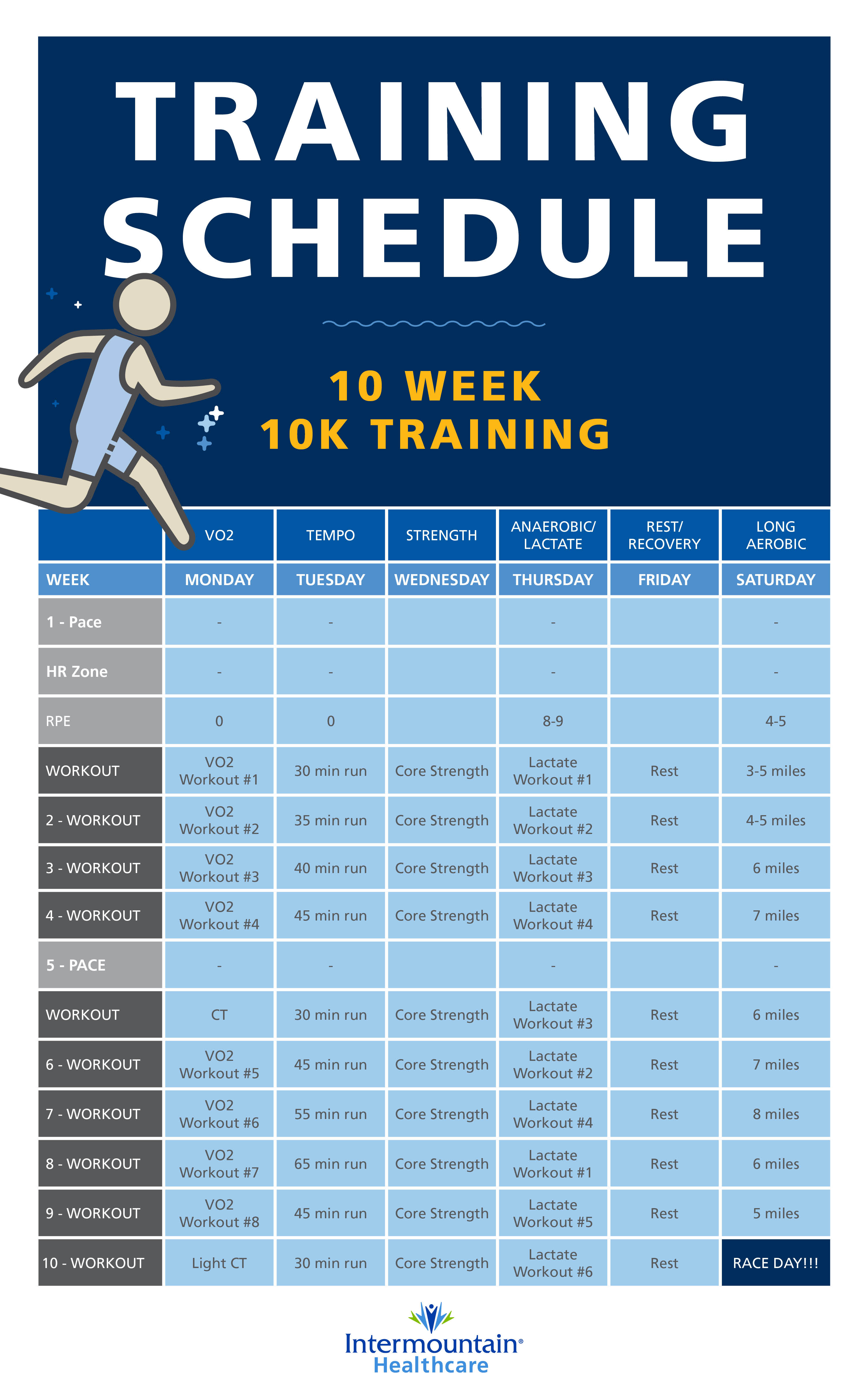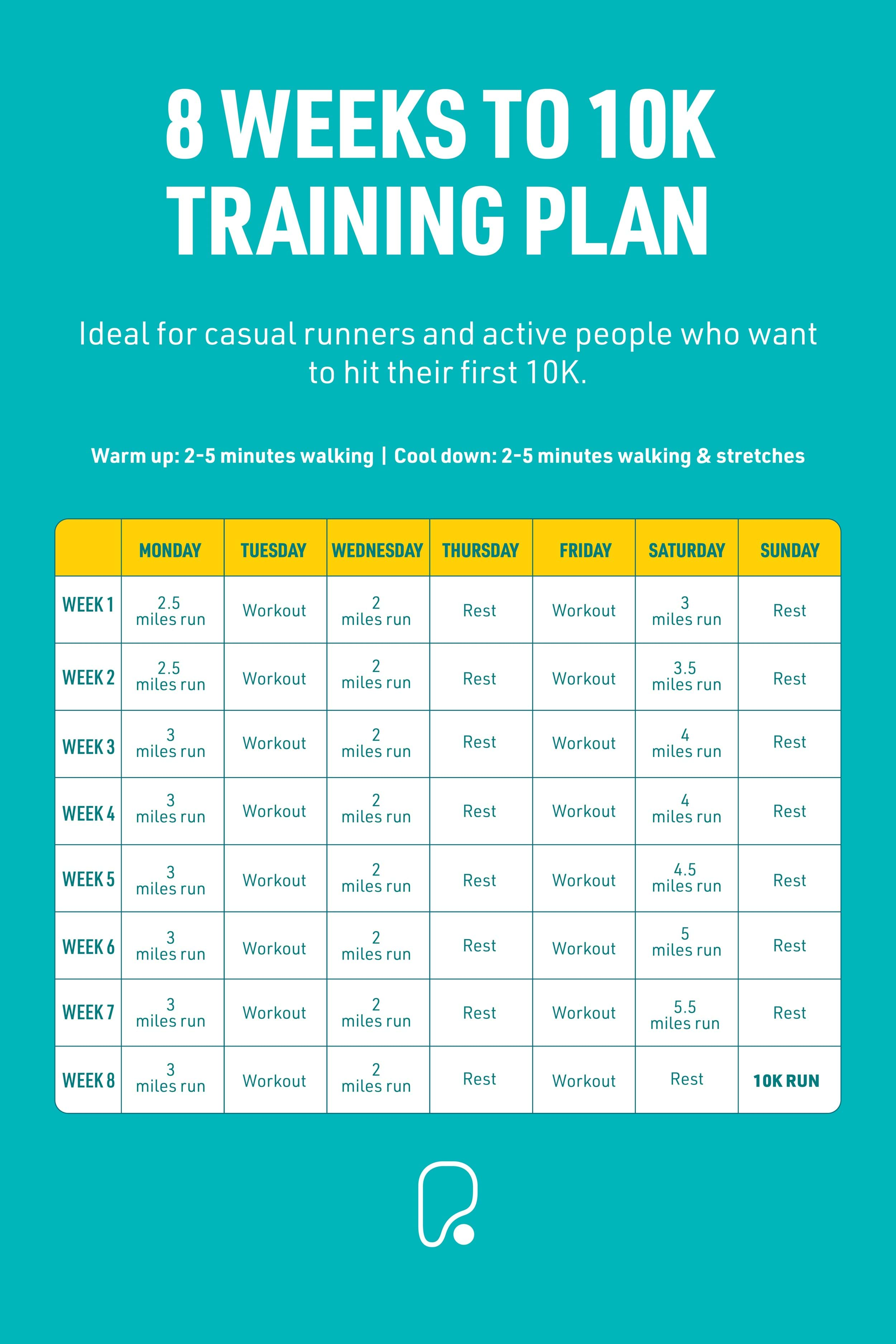What is a Couch to 10K Running Plan?
A Couch to 10K running plan is a structured training program specifically designed for beginners who aspire to transition from a sedentary lifestyle to running a 10K race (approximately 6.2 miles). This type of plan typically spans several weeks, gradually increasing the duration and intensity of running workouts while incorporating rest days, cross-training, and strength training. The primary objective of a Couch to 10K running plan is to develop the necessary physical and mental stamina to complete a 10K race, making it an ideal choice for those looking to challenge themselves and improve their overall fitness.
How to Choose the Right Couch to 10K Running Plan
Selecting the ideal Couch to 10K running plan is crucial for ensuring a successful and enjoyable journey. To make an informed decision, consider the following factors:
- Time commitment: Determine how many weeks you can dedicate to the training program. Couch to 10K plans typically range from 8 to 20 weeks, so choose a plan that fits your schedule.
- Personal fitness level: Assess your current fitness level, including your running pace, endurance, and strength. Some plans cater to beginners with little to no running experience, while others are more suitable for those with a basic fitness foundation.
- Available resources: Consider the resources you have access to, such as gym memberships, running trails, or fitness apps. Select a plan that can be easily integrated into your lifestyle and makes the best use of your resources.
- Training approach: Different plans follow various training philosophies. Some emphasize walk-run intervals, while others focus on gradually increasing running time. Choose a plan that aligns with your preferences and goals.
- Flexibility: Opt for a plan that offers some flexibility, allowing you to adjust the schedule based on your personal and professional commitments.
By carefully evaluating these factors, you can choose a Couch to 10K running plan that suits your needs and sets you up for success.
Popular Couch to 10K Running Plans to Consider
When searching for a Couch to 10K running plan, consider these popular options, each with unique features and benefits:
- NHS Couch to 5K: This UK-based plan is an excellent starting point for beginners, gradually progressing from walking to running 5K over nine weeks. After completing the NHS Couch to 5K, you can easily transition to a Couch to 10K plan.
- Jeff Galloway: Former Olympian Jeff Galloway’s Couch to 10K plan incorporates his signature run-walk-run method, which involves alternating between running and walking intervals. This approach reduces the risk of injury and helps beginners build endurance.
- Hal Higdon: Renowned running coach Hal Higdon offers a Couch to 10K plan that spans 12 weeks, with three runs per week and one cross-training session. Higdon’s plan includes detailed descriptions of each workout and emphasizes gradual progression.
By exploring these popular Couch to 10K running plans, you can find one that suits your needs and helps you achieve your running goals.
Key Components of a Successful Couch to 10K Running Plan
A well-designed Couch to 10K running plan includes several essential elements that contribute to your success. These components include:
- Progressive running intervals: A successful plan gradually increases the duration and intensity of running intervals, allowing your body to adapt to the new demands. This progressive approach minimizes the risk of injury and builds endurance over time.
- Cross-training: Engaging in various physical activities, such as swimming, cycling, or strength training, helps improve overall fitness and reduces the risk of injury. Cross-training also adds variety to your workout routine, keeping it interesting and enjoyable.
- Rest days: Rest days are crucial for recovery and injury prevention. A well-structured Couch to 10K plan incorporates rest days, giving your body time to repair and rebuild muscle tissue.
- Strength training: Incorporating strength training exercises, such as squats, lunges, and core work, helps improve running efficiency and reduces the risk of injury. Strength training also enhances muscular endurance, making it easier to maintain a consistent running pace during your 10K race.
By integrating these key components into your Couch to 10K running plan, you can optimize your training and maximize your chances of success.
Staying Motivated and Overcoming Challenges During Your Couch to 10K Journey
Staying motivated and committed to your Couch to 10K running plan can be challenging, especially when faced with obstacles. Here are some tips and strategies to help you maintain momentum:
- Set realistic goals: Break your overall goal of completing a 10K race into smaller, achievable milestones. This approach helps you track progress and maintain motivation as you reach each objective.
- Find a running buddy: Partnering with a friend or joining a local running group can provide accountability, support, and encouragement during your training.
- Mix up your routine: Incorporate variety into your workouts by changing locations, trying new running routes, or experimenting with different cross-training activities.
- Document your progress: Keep a training log or journal to record your workouts, achievements, and challenges. Reflecting on your progress can be a powerful motivator and a source of inspiration during difficult moments.
- Stay positive: Maintain a positive attitude, even when faced with setbacks or challenges. Remember that overcoming obstacles is a natural part of the training process, and each challenge presents an opportunity for growth and learning.
By implementing these strategies, you can maintain motivation, overcome challenges, and successfully complete your Couch to 10K running plan.
Preparing for Your First 10K Race: Tapering and Race-Day Strategies
As your Couch to 10K running plan progresses, it’s essential to prepare for race day by tapering and implementing effective strategies. Here’s what you need to know:
Tapering
Tapering is the process of gradually reducing your training volume and intensity in the weeks leading up to a race. This period allows your body to recover from the rigors of training, reducing the risk of injury and ensuring that you’re well-rested for race day. A typical tapering period for a 10K race lasts two to three weeks.
Race-Day Strategies
- Pacing: Establish a realistic race pace based on your training and current fitness level. Aim to maintain a steady, sustainable pace throughout the race, avoiding the temptation to start too fast.
- Hydration: Stay hydrated before, during, and after the race. Consider carrying a water bottle during training runs to practice hydration strategies and determine your preferred hydration method for race day.
- Nutrition: Fuel your body with a balanced, nutrient-rich diet in the days leading up to the race. On race day, consume a light, easily digestible meal or snack one to three hours before the start. Experiment with different pre-race meals during training to determine what works best for you.
By tapering and implementing effective race-day strategies, you can optimize your performance and enjoy a successful 10K race experience.
Post-10K Race: Reflecting on Your Journey and Setting New Goals
After completing your Couch to 10K running plan and finishing your first 10K race, take time to reflect on your journey and celebrate your achievements. Accomplishing a 10K race is a significant milestone, and it’s essential to acknowledge your hard work and dedication. Here are some steps to help you reflect and set new goals:
- Review your training: Look back at your training log or journal and acknowledge your progress. Identify areas where you’ve improved and note any challenges you’ve overcome.
- Recognize your achievements: Celebrate your successes, both big and small. Share your accomplishment with friends, family, or your running community, and bask in the pride of completing a 10K race.
- Rest and recover: Give your body the time it needs to recover from the race. Schedule rest days, engage in light activities, and prioritize sleep to ensure you’re fully rejuvenated.
- Set new goals: Once you’ve recovered, consider setting new running goals. These could include improving your 10K time, running a half marathon, or incorporating new cross-training activities into your routine.
By reflecting on your Couch to 10K journey and setting new goals, you can maintain momentum, continue to develop your running abilities, and enjoy a lifetime of healthy, active living.
Additional Resources for Couch to 10K Runners
To further support and enhance your Couch to 10K running experience, consider exploring these valuable resources:
- Running apps: Apps like Nike Run Club, Runkeeper, and Strava offer training plans, tracking features, and community support. These tools can help you stay organized, motivated, and connected with other runners.
- Online forums and communities: Websites such as Reddit’s r/running, LetsRun, and Runner’s World Community provide a platform for sharing experiences, asking questions, and receiving advice from fellow runners. Engaging with these communities can help you learn from others and build a support network.
- Books and blogs: Publications like “Born to Run” by Christopher McDougall, “Runner’s World” magazine, and various running blogs offer insights, tips, and inspiration for runners of all levels. Exploring these resources can help you deepen your understanding of running and discover new strategies for success.
- Local running clubs and groups: Joining a local running club or group can provide opportunities for group runs, social events, and camaraderie. Running with others can help you stay motivated, learn from experienced runners, and build lasting friendships.
By utilizing these additional resources, you can enrich your Couch to 10K running experience, connect with other runners, and continue to grow and develop as a runner.






